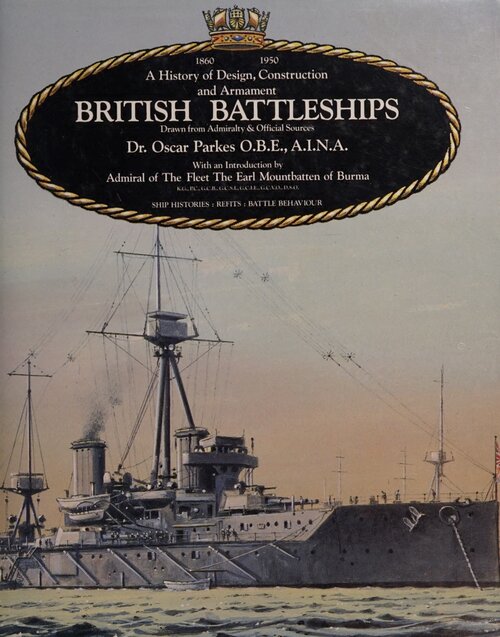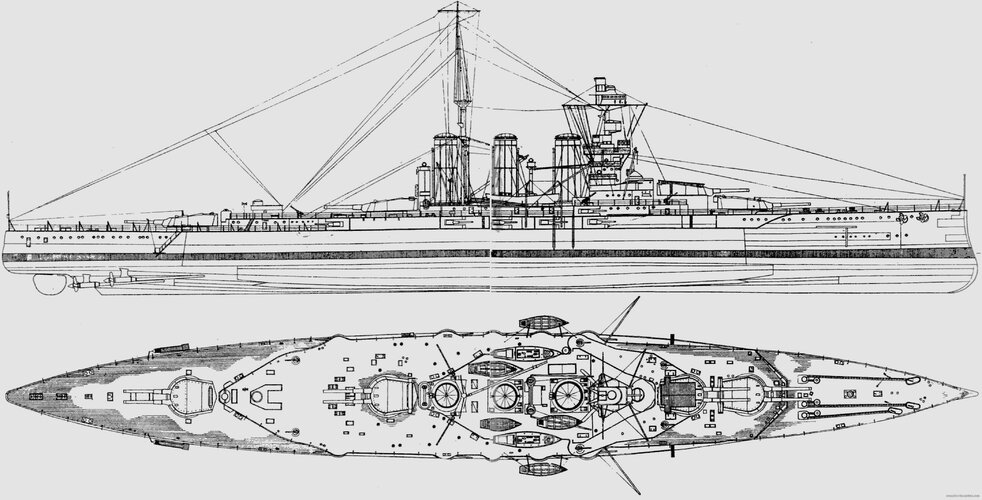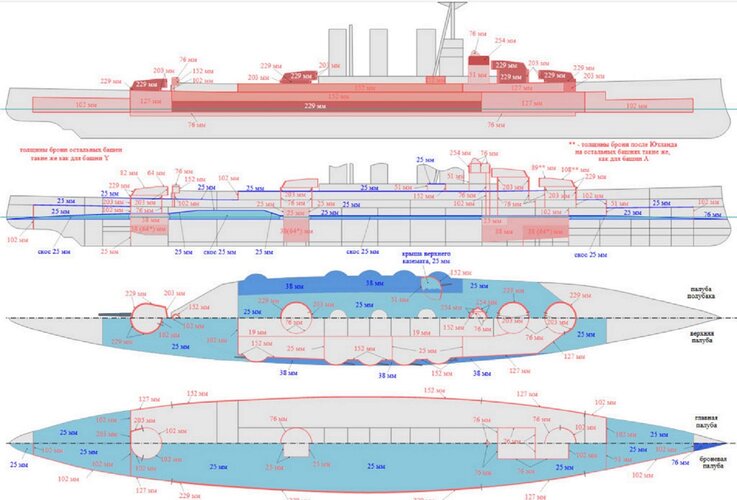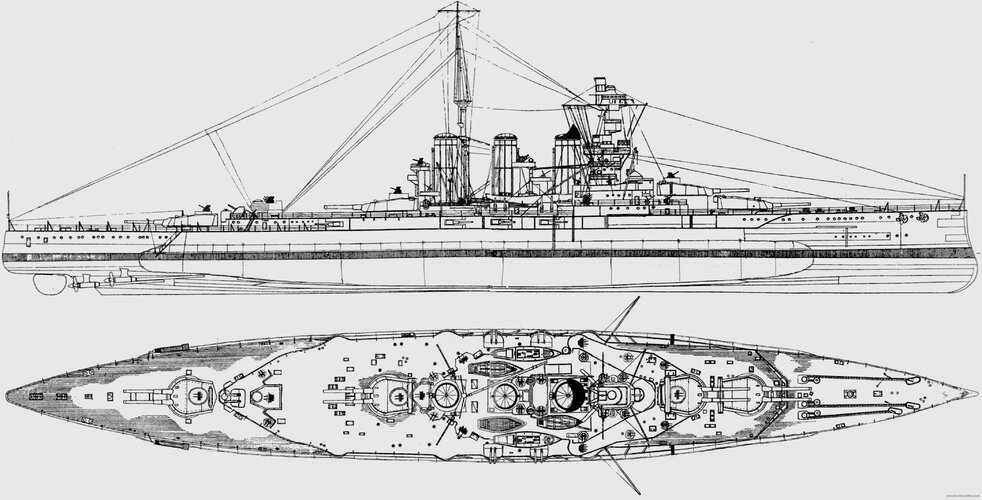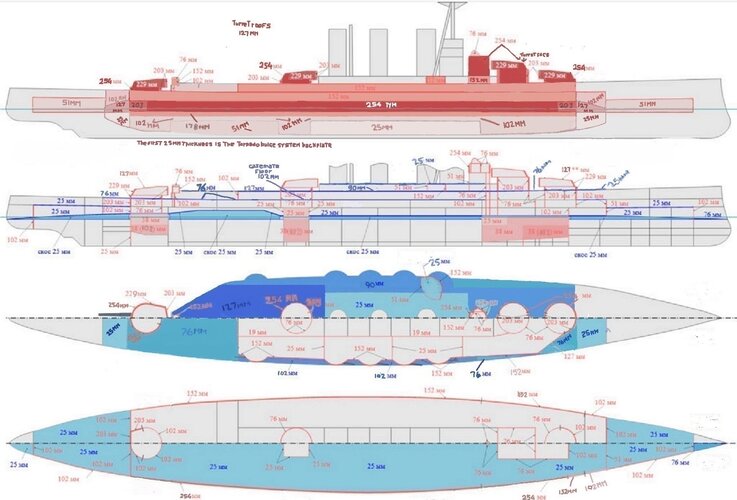VERY LATE to this discussion, but it took me an age to locate the source of this attachment…
Oscar Parkes’s British Battleships…
Interesting statement about POTENTIAL speed for Tiger (and Queen Elizabeth class)…
So, perhaps a re-engineering could result in a speed increase….
Hi

Yes, I had read about those boilers and turbines; it would have been a first choice, but only if the Tiger would have had a full reconstruction. At that early time, this machinery was still in ''prototype development'' though it showed reliabity and performance. Two decisions came against it; the development was still at an early stage of reliability, so time was needed to achieve full production if the admiralty would put orders in. Though the QEs' were still at the design stage at that date, it was calculed that this machinery wouldn't be ready in time, and during that time, it was also argued that a mix coal/oil machinery was still the most reliable option since not all the far away colonies had access or the logistics for oil. This was the main reason the Tiger got what it had, with the QEs' taking the oil only machinery; they would more probably stay closer to the bigger bases which had the infrastructures for oil refills and repairs.
The other reason is that the admiralty, in my view and some of the authors of the books I read, was mostly composed of people with more conservative views; maybe they had more insight on the matter than we do now in the political and experience environment and that weighed in the balance.
The small boilers did achieve the reliability later, when the admiralty relented and decided on the option, but it was too late for the early ships until a full reconstruction would happen. The new type of machinery was not an interchageable unit, and though much smaller, all the surrounding accessories, needed to be re-adapted to the new set up, and sometimes new systems would have to be installed; result, a very expensive option, and time consuming installation made it imposssible to just alter the machinery quickly and cheaply.
In a scenario where the Tiger is the training ship and not the Iron Duke, nothing would have been possible until late 1936 and 37; that would mean no time, no large funding, and not much leeway to get the ship in dry dock. So the only possibility would have been a re-installation and modification of the main belt, conning tower, re-installation of ''Q'' barbette and turret, and the removal of what wuld hve been left of the 39 boilers ( apprx. 13 left for the 18 knot max speed dictated) and installation of the old and refurbished Warspite boiers (24) plus the installation of some Queen Elizabeth refurbished boilers which have been very recently taken out on her reconstruction (15) for the total of 39 put back in the pervious boiler places; no machinery change would have been necessary and the new ''oil only'' power would have been somewhere in the neighborhood of 125000 SHP. Next, a slightly thicker (10 in.) and longer ( spanning the length between ''A'' and ''X'' barbette) outer main belt, an upper and small lower 6 in. belt (an extension only for the top, and a 4 feet wide addition under the main belt) also extended to the same barbettes, the torpedo protection system, thicker deck plating ( ''slap on'' decking, no deep restructuring) and AA armament....Extra weight of the AAs' offset by the removal of the first two 6 in. guns on each side and the torpedo system.
Here is my last iteration of what I think is a logical re-arragement..... The first two are the original set up, the next two are what I came up with.
AA armament consists of :
Original 8 13.5/45 primaries
Original 8 6in. secondaries in casemates minus 4 ( two first ones on each side, previously 12 units)
New 10 QF 4/45 HA MKXIX in 5 twin turrets
new 24 2 pdr (40 mm) vickers QF MKVIII octuple in 3 units
new 12 2pdr (40mm) Bofor QF MKXI in 6 twin arrangement
new 32 1 pdr (20mm) Oerlikon QF MKXI in 16 twin arragement
new 4 1 pdr (20mm) Oerlikon QF MKXI in 4 singles on superstructure
A total of 72 AA armament, not counting the HA 4/45
Plating additions can be seen on th diagrams
This is not an absolute and comments and suggestions are more than welcome

